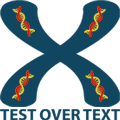Sunk Cost for BAs

Sunk Cost for BAs is not only important as a business analysis topic, but its psychological aspects should also be seen. It is a refers to a cost that has already been incurred and cannot be recovered. In economic, financial, or decision-making contexts, the concept highlights that such costs should not influence current or future decisions because they remain unchanged regardless of the outcome of a choice.
Key Characteristics of Sunk Costs:
- Irrecoverable: The cost has been spent and cannot be undone.
- Past-Oriented: It is associated with past actions or decisions.
- Irrelevant to Future Decisions: Rational decision-making requires focusing on marginal costs and benefits rather than sunk costs.
Example of a Sunk Cost:
Imagine a company invests $1 million in developing a software product. Partway through, it becomes clear the software will not be profitable. The $1 million is a sunk cost, and the decision to continue development should depend only on the future costs and potential revenues, not on the initial investment.
Sunk Cost Fallacy:
The sunk cost fallacy occurs when individuals consider sunk costs in their decision-making, leading them to persist with a course of action despite evidence that continuing is no longer beneficial. This often stems from:
- Emotional attachment.
- Aversion to admitting failure.
- Misplaced hope that additional investment will “recover” the sunk cost.
How to Avoid the Sunk Cost Fallacy:
Seek Objective Input: Consult unbiased opinions when making critical decisions.
Focus on the Future: Base decisions on prospective costs and benefits.
Acknowledge the Loss: Accept that sunk costs are gone and cannot be recovered.
Tools to Manage Sunk Costs in Business Analysis and Project Management:
- Decision Trees: Helps evaluate future paths without considering sunk costs.
- Cost-Benefit Analysis: Focuses on future costs and benefits only.
- Earned Value Management (EVM): Tracks project performance without factoring in sunk costs.
- NPV Analysis: Excludes sunk costs when evaluating the profitability of investments.
- Scenario Analysis: Models alternative future scenarios to support rational decision-making.
Other Business Analysis Articles:

